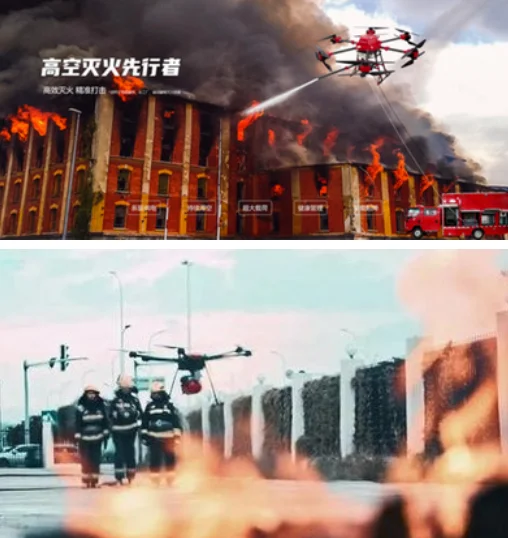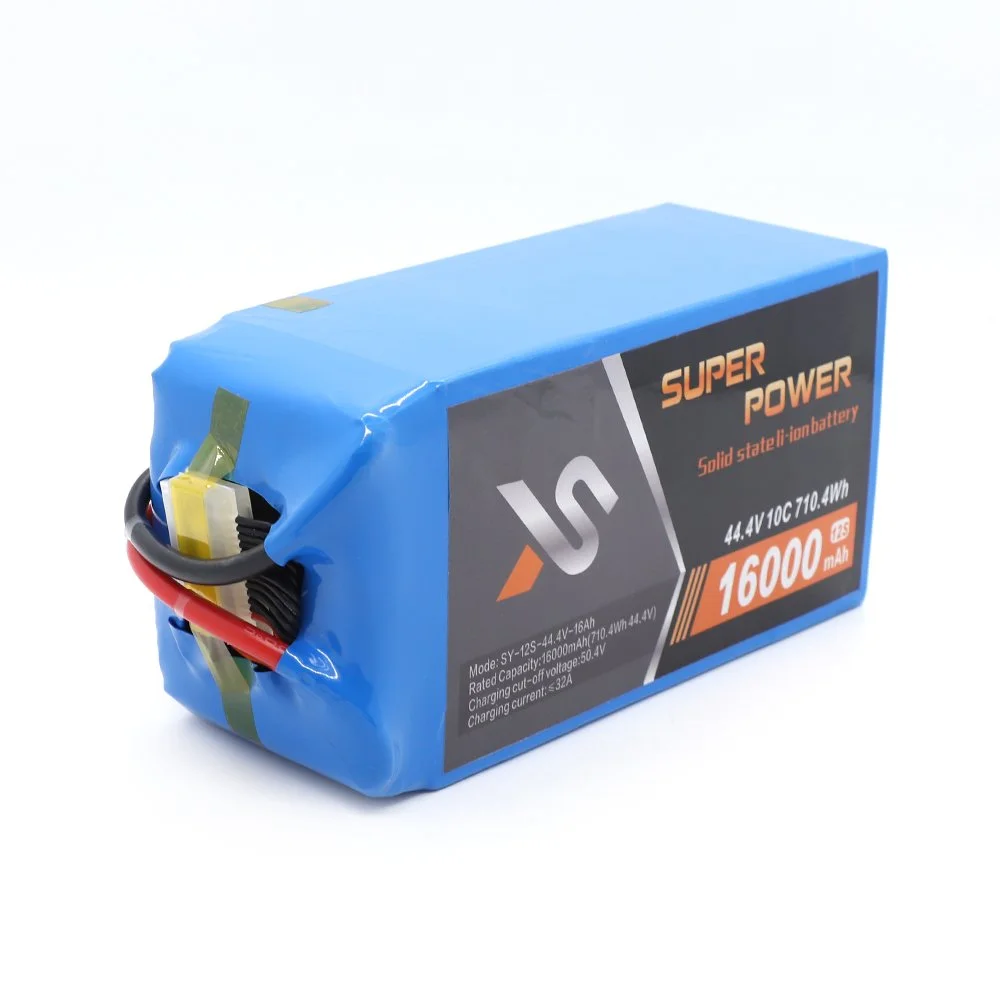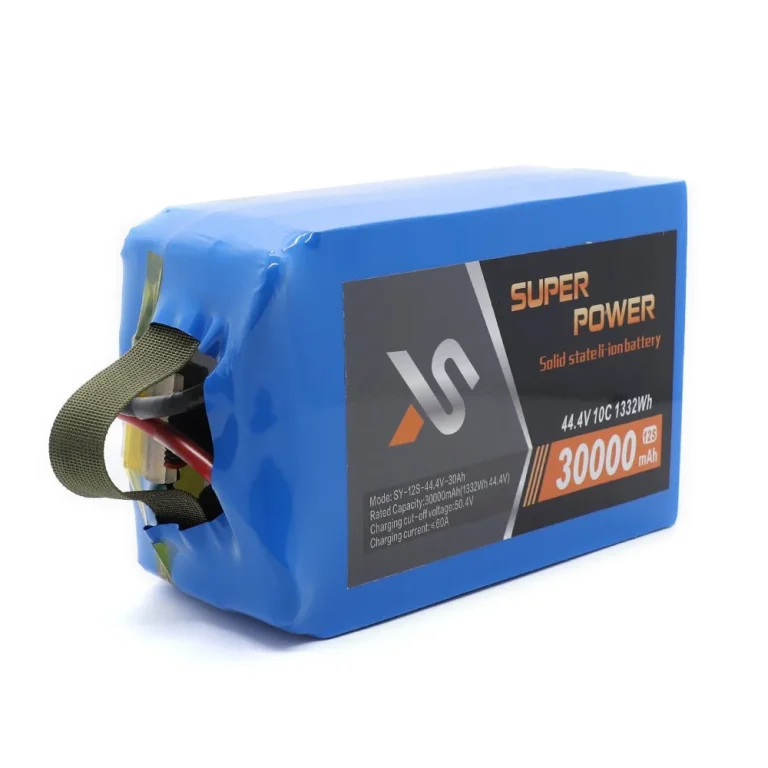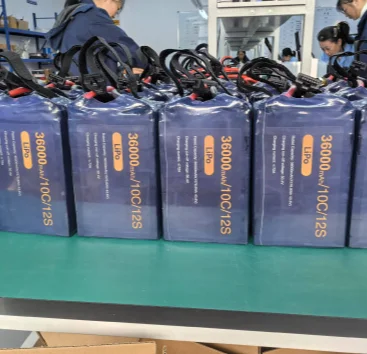The Application of Drones In Modern Firefighting
Firefighting tactics have changed with the application of drones. The newest technology has been a prominent characteristic of modern firefighting due to the fact that it has a component of enhancing security and efficiency. Delivery and access to inaccessible or risky regions is guaranteed through the application of drones in firefighting.
The Primary Role of Battery Technology
The effectiveness of drones in firefighting largely relies on battery technology. Batteries are the core of drones that determine the flight duration, payload, and performance of drones.
Introduction of Semi-Solid Li-Ion Battery technology is in this direction. They have better energy density, longer cycle life, and better safety compared to traditional lithium-ion batteries.
Advantages of Drones in Firefighting Operations
Improved Mobility and Flexibility
Advanced battery-powered drone vehicles such as the SY-7S-25.55V-31Ah Semi-Solid Li-Ion Battery soar for longer and faster, traversing miles of terrain in minutes. Increased mobility is needed in firefighting missions where seconds count. Glide smoothly through hazy interiors and drones gather vital information in seconds.
Real-Time Surveillance and Data Transmission
One of the benefits of utilizing drones in firefighting is that drones have the capability to broadcast live. Drones can provide a live stream picture at the accident location to offer a broad overview aerial picture from where the decision can be taken at the command centers.
Semi-Solid Li-Ion Batteries enhance the usage life of the drones, with real-time data transmission without ever needing to be recharged.
Drones may be outfitted with different payloads, chosen to meet specific firefighting missions, including thermal sensors or chemical sensors. Semi-solid lithium-ion batteries provide more energy density, which allows drones to transport heavier payloads without reducing flight time.
Such versatility allows them to conduct several tasks in one mission, from hot spot location to fire retardant spreading.
Safety and Reliability
Safety can never be a top priority during any fire-fighting mission. Drones reduce human firefighters’ exposure to harm through surveillance tasks inside zones of danger.
SY-12S-44.4V-16Ah Semi-Solid Lithium Ion Battery carries the industry-best levels of safety since there are batteries into which one could stick a knife and not provoke an explosion or an ignition, hence adding an added level of reliability to missions that count.
Current Drone Battery Technologies
Highest in Demand Types of Batteries
Lithium-polymer (Li-Po) and normal lithium-ion (Li-Ion) batteries are used by older drone batteries. While excellent, they are inferior to newer models in energy density and cycle life.
Advancements in Technology
Semi-solid lithium-ion batteries are among the key technologies of drone improvement. The high-energy density battery range between 270wh/kg and 340wh/kg consists of value performance improvement that has the potential to propel drones decades ahead in poor conditions like firefighting.
Applications of Semi-Solid Lithium-Ion Battery of drones in firefighting
Advantages of Semi-Solid Batteries
Improved Safety: Applications of Solid Electrolytes
Application of solid electrolytes in semi-solid lithium-ion batteries significantly enhances their safety record. Solid electrolytes, as opposed to common liquid electrolytes, cannot leak or cause thermal runaway, which are typical problems under aggressive conditions like firefighting. This is particularly beneficial for drones employed in aerial surveillance of hostile areas so that they can operate without any added danger.
Higher Energy Density: Compatibility with High-Capacity Electrode Materials
Semi-solid lithium-ion batteries deliver improved energy density, which can be combined with electrodes of high capacity. Combined, they offer extra energy to be stored within the same volume of space, hence increasing the drones in firefighting operation receive longer flying range. The enhanced range of energy density of 270wh/kg to 340wh/kg gives batteries with the aspects of extended duration flight and extra weights, required for effective fire-fighting operations.
Long Cycle Life: Suppression of Lithium Dendrite Growth
One of the primary advantages of the semi-solid lithium-ion battery is that it possesses long cycle life. Prevention of lithium dendrite growth in the battery prevents short circuits and corrosion. This introduces longer lifespan and stable operation, reducing replacement and maintenance cost. SY-12S-44.4V-16Ah semi solid lithium ion battery is one such bright example of the same with its 800 cycles (0.5C/0.5C 100%DOD) long cycle life being a stable option for the use in a drone.
Practical Application Examples
Their application in drones has already been a highly successful practice in actual application. For instance, drones equipped with such advanced batteries have attained better endurance and potential for performance in long-duration fire-fighting missions. The potential to fly for another hour or so without any decrease in safety and performance abilities clearly demonstrates the technological success.
Impact of Firefighting Drone Battery Technology on Endurance Performance
Battery technology is taken from the fire drone’s endurance strength. The use of lithium-ion batteries in the semi-solid battery system brings tremendous improvement in flying hours, enabling covering more distance within recharging intervals. The capability is a helpful intervention in case of extensive fire catastrophes that undergo intermittent observation and data recording.
Charging Speed
Recharge time is also an aspect that must be considered when using drones. Semi-solid lithium-ion batteries are faster to recharge than regular batteries, and drones can be back in action as soon as they exhaust fuel. The rapid turnaround increases the preparedness and effectiveness of fire missions with the guarantee that resources will never be exhausted whenever required.
Safety Measures
Safety always comes first in any firefighting emergency incident. Safety features of semi-solid lithium-ion batteries, such as puncture safety without explosion and fire, are a protective measure for equipment and individuals involved in fighting fires.
Challenge and Mitigation Strategies
Technical Challenges
All of these benefits belong to the semi-solid lithium-ion batteries, though there are certain technical constraints that need to be overcome so that the batteries operate at their best. These include stability in extreme environmental conditions and high batch uniformity of production.
Mitigation Strategies
For their solution, development and research continue to optimize the composition of the electrolyte and material for electrodes at the cost of optimizing stability as well as consistent performance. Proper quality control during manufacture also serves to keep each battery safe and functions up to higher standards.
The semi-solid lithium-ion battery technology has helped a lot to improve significantly the performance and efficiency of the drones in firefighting operations by providing increased safety features, increased energy density, long cycle life, improved endurance capacity, improved rate of charging, and robust safety features.
Taixing Shengya Electronic Technology Co., Ltd. is a company specializing in the manufacture and supply of high energy density solid-state lithium-ion soft pack battery cells and packs. Their 270Wh/kg, 320Wh/kg, 330Wh/kg, and 340Wh/kg series are of long cycle life (800-1000 times charge/discharge cycle) and high safety.
They come in different 6S, 7S, 12S, 13S, and 14S configurations, which are optimally designed for drones in firefighting missions. The company has a very strong policy of excellence that concentrates on manufacturing quality products that enhance operations and are safe to use in all of the world’s industries.












